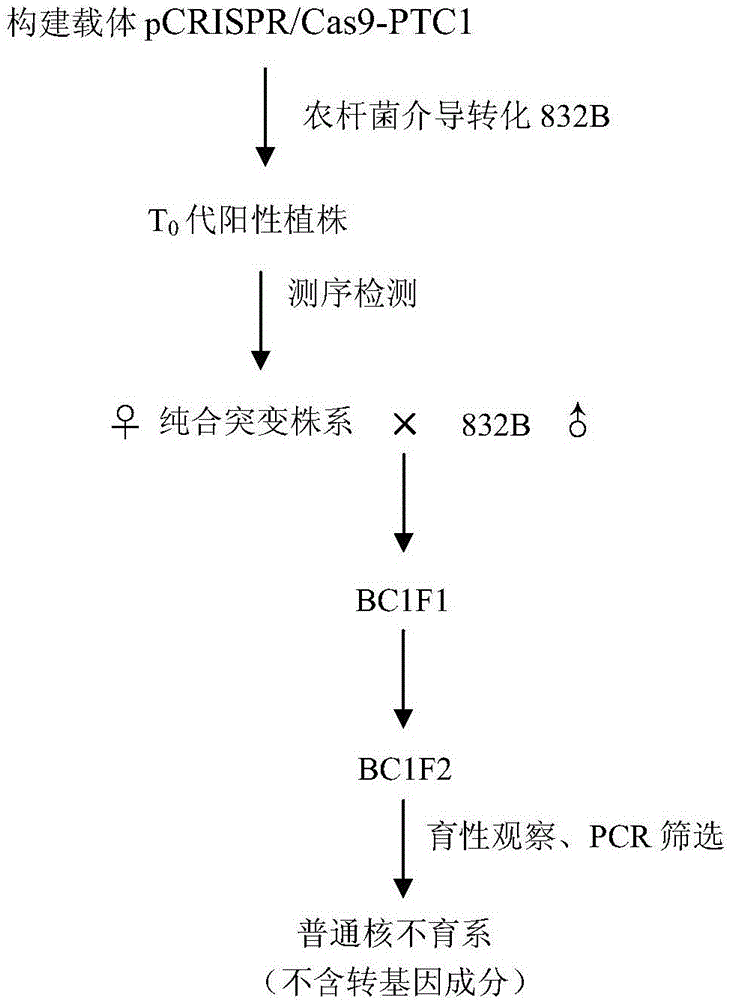Method for cultivating rice common nuclear sterile lines
A general sterility line and sterility technology, applied in chemical instruments and methods, botanical equipment and methods, biochemical equipment and methods, etc., to achieve the effect of avoiding potential risks, rapid cultivation, and high efficiency
- Summary
- Abstract
- Description
- Claims
- Application Information
AI Technical Summary
Problems solved by technology
Method used
Image
Examples
Embodiment 1
[0038] A method for rapidly cultivating common nuclear sterile lines of the present invention, the specific object of its application is the PTC1 gene in the CRISPR / Cas9 system site-directed mutation maintenance line 832B (SEQ ID NO.7 is PTC1 The cDNA sequence of the gene, SEQ ID NO.8 is the qDNA sequence of the PTC1 gene) to obtain the common GMS line, which specifically includes the following steps (the process flow can be found in figure 1 ):
[0039] (1) Design double target sites according to the exon sequence of PTC1 gene:
[0040] PTC1-Target1 (SEQ ID NO. 1): CATGGTGGTCACCAAGTACC;
[0041] PTC1-Target2 (SEQ ID NO. 2): GGCCACAAGCTGCTCAGCCT.
[0042] The two sites were located at 886bp-905bp and 917bp-936bp of the coding region of PTC1 gene, respectively.
[0043] PTC1-Target1 has a structure of 5'-(N)n-NGG-3'; PTC1-Target2 has a structure of 5'-(N)n-NGA-3'.
[0044] (2) Construction of the CRISPR / Cas9 recombinant vector (pCRISPR / Cas9-PTC1) containing PTC1-Target1 and P...
PUM
 Login to View More
Login to View More Abstract
Description
Claims
Application Information
 Login to View More
Login to View More - R&D
- Intellectual Property
- Life Sciences
- Materials
- Tech Scout
- Unparalleled Data Quality
- Higher Quality Content
- 60% Fewer Hallucinations
Browse by: Latest US Patents, China's latest patents, Technical Efficacy Thesaurus, Application Domain, Technology Topic, Popular Technical Reports.
© 2025 PatSnap. All rights reserved.Legal|Privacy policy|Modern Slavery Act Transparency Statement|Sitemap|About US| Contact US: help@patsnap.com



